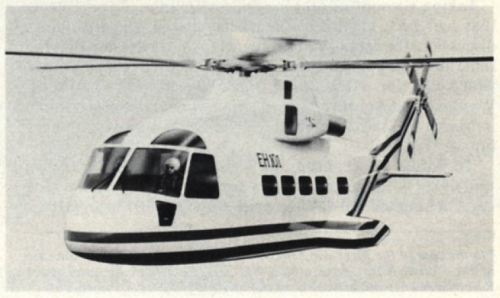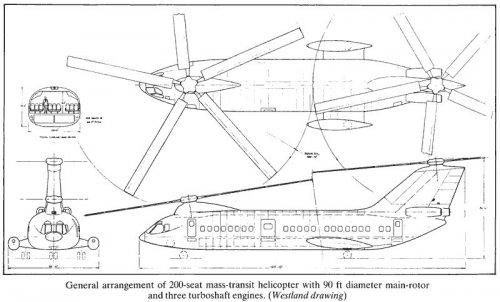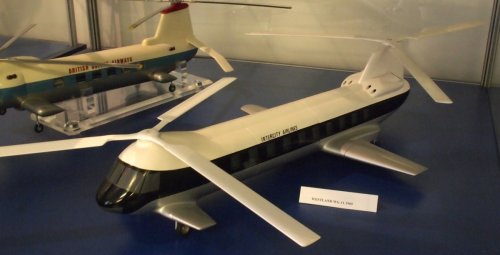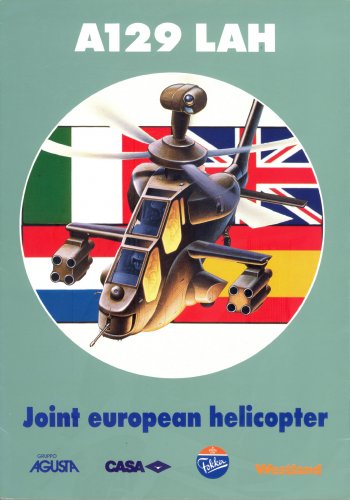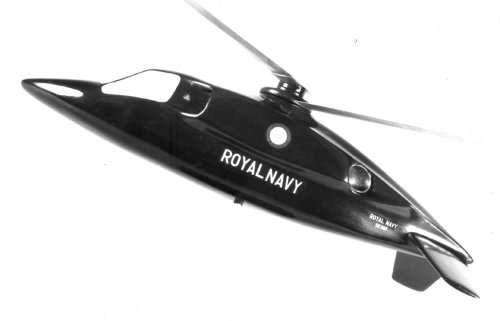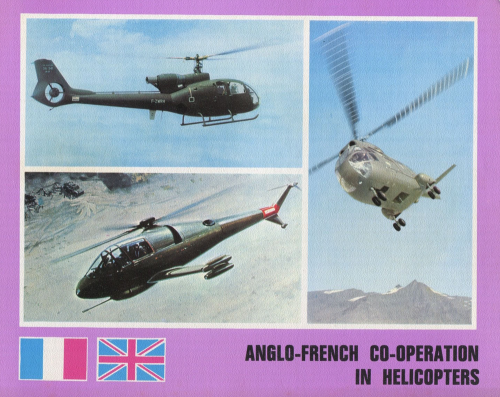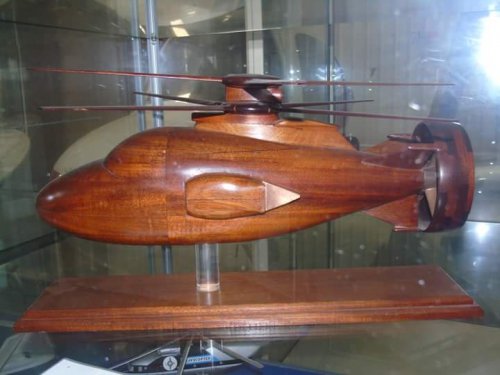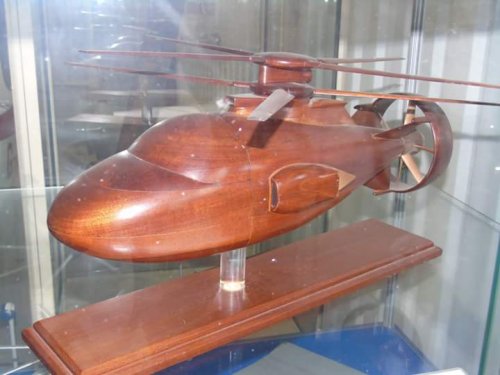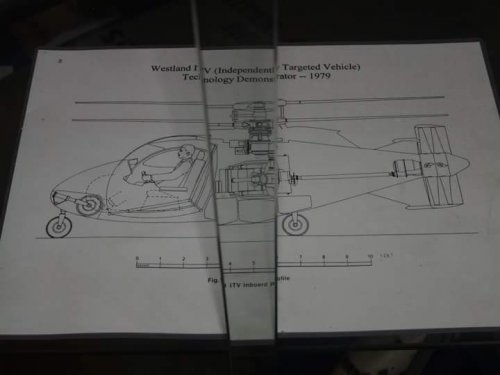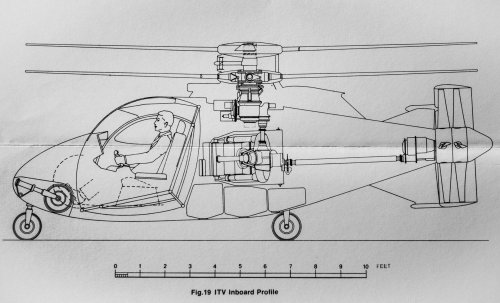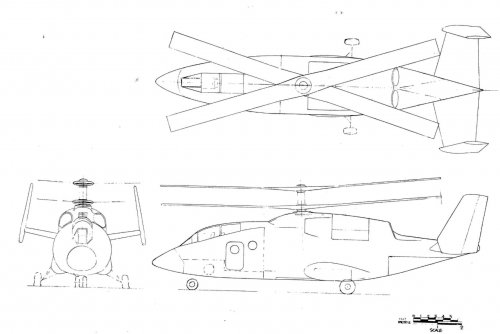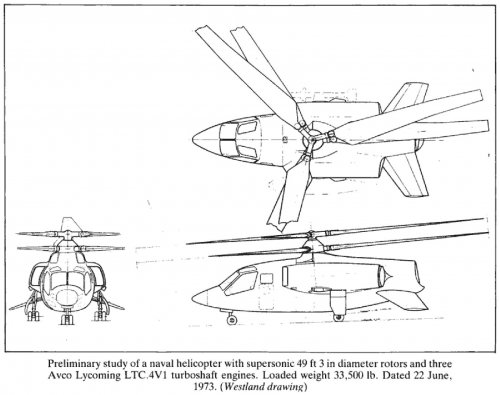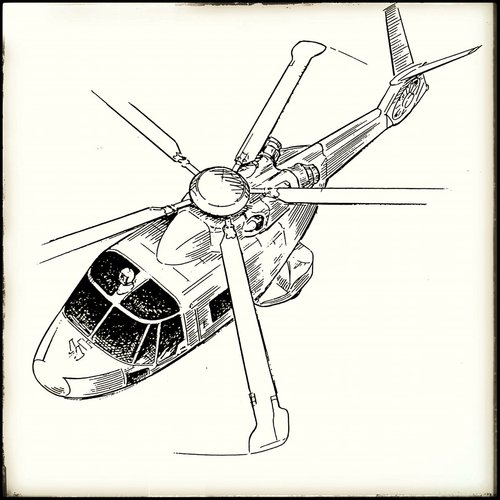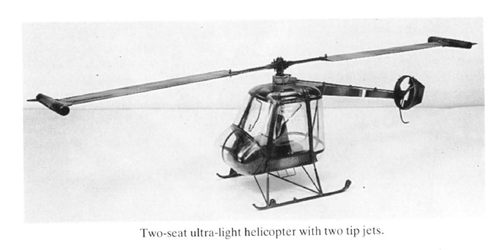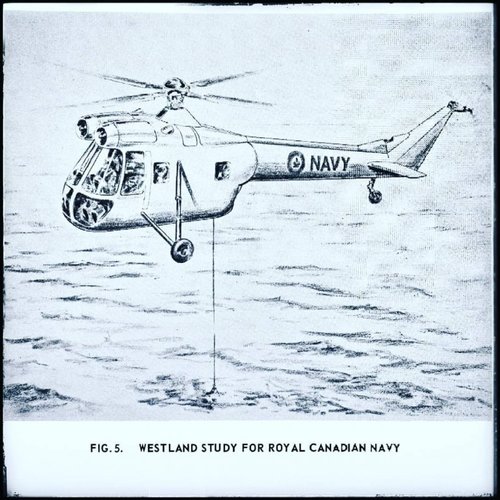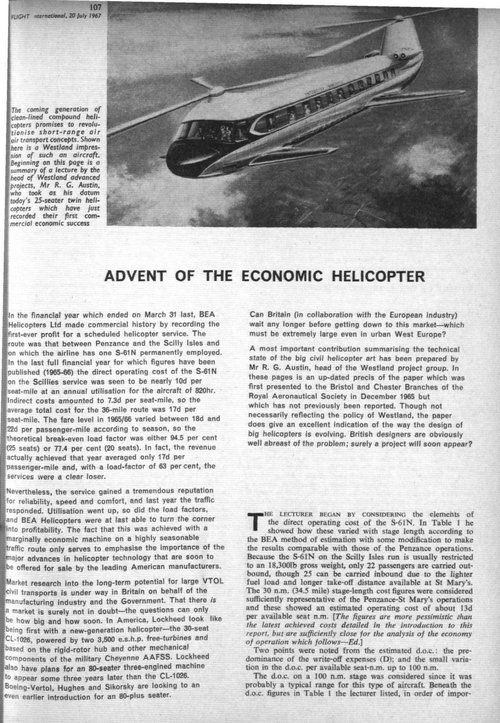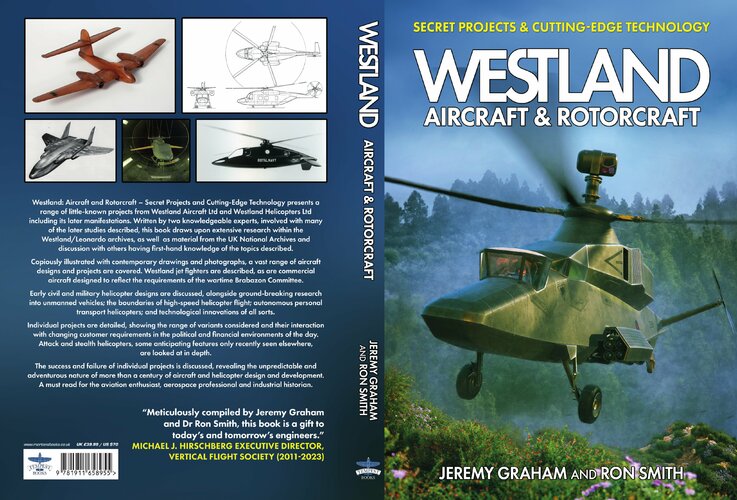You are using an out of date browser. It may not display this or other websites correctly.
You should upgrade or use an alternative browser.
You should upgrade or use an alternative browser.
Westland Helicopter Projects
- Thread starter hesham
- Start date
- Joined
- 6 September 2006
- Messages
- 4,816
- Reaction score
- 9,377
When Westland prepared their first brochure in late 1950 to meet a Naval Staff Target for a General Purpose and Anti-Submarine Helicopter (becoming N.A.43) they proposed two versions of the licence-built S.55. One using the standard American engine, the P&W R-1340 and another with coupled Alvis Leonides radial engines. This was because no British piston engine existed in the 700-900hp range, an engine of this rating was considered necessary to meet the requirements.
The R-1340 powered design had a max AUW of 7,365lb. In contrast the Leonides-powered version had a max AUW of 9,332lb. It was assessed as capable of meeting all general service and A.S. roles except maximum speed was 4-10kts less than specified and percentage hovering power was 80% instead of 65% required. The design was dismissed as overpowered with the unchanged rotor being badly overloaded (Sikorsky's original design weight being 6,340lb) which would reduce the fatigue life of the blades. The Ministry of Supply estimated the limiting weight to maintain flight on one engine was 8,000lb with 50kts forward speed.
The installation of two engines was expected to require Westland to undertake development of the cooling system, a stronger transmission and the inclusion of an engine coupling system with two clutches and free wheels. The coupled engines also risked causing torsional vibrations. The MoS estimated it would take Westland at 12-18 months years to get a prototype aircraft flying and perhaps two years for a production aircraft. The MoS wisely advised Westland to look at the 700-800hp Wright R-1300 engine Sikorsky already earmarked as an alternative engine. Of course, early production Whirlwinds did have the R-1340 engine.
Source: AVIA 54/498 Naval Staff Target for Anti-Submarine Helicopter
The R-1340 powered design had a max AUW of 7,365lb. In contrast the Leonides-powered version had a max AUW of 9,332lb. It was assessed as capable of meeting all general service and A.S. roles except maximum speed was 4-10kts less than specified and percentage hovering power was 80% instead of 65% required. The design was dismissed as overpowered with the unchanged rotor being badly overloaded (Sikorsky's original design weight being 6,340lb) which would reduce the fatigue life of the blades. The Ministry of Supply estimated the limiting weight to maintain flight on one engine was 8,000lb with 50kts forward speed.
The installation of two engines was expected to require Westland to undertake development of the cooling system, a stronger transmission and the inclusion of an engine coupling system with two clutches and free wheels. The coupled engines also risked causing torsional vibrations. The MoS estimated it would take Westland at 12-18 months years to get a prototype aircraft flying and perhaps two years for a production aircraft. The MoS wisely advised Westland to look at the 700-800hp Wright R-1300 engine Sikorsky already earmarked as an alternative engine. Of course, early production Whirlwinds did have the R-1340 engine.
Source: AVIA 54/498 Naval Staff Target for Anti-Submarine Helicopter
- Joined
- 3 June 2006
- Messages
- 3,088
- Reaction score
- 3,921
Source: https://twitter.com/RAeSTimR/status/758667351147569152Tim Robinson @RAeSTimR said:Interesting 1967 Westland concept for a 200-seat(!) 3-engine tandem rotor chopper - from 1967. #avgeek
Attachments
hesham said:Hi,
Anther twin rotor helicopter project to Westland.
That's very similar to the WS.11, a model of which can be seen at the Helicopter Museum:
Attachments
- Joined
- 26 May 2006
- Messages
- 34,732
- Reaction score
- 15,593
Hobbes said:That's very similar to the WS.11, a model of which can be seen at the Helicopter Museum:
Nice find Hobbes.
fightingirish said:Source: https://twitter.com/RAeSTimR/status/758667351147569152Tim Robinson @RAeSTimR said:Interesting 1967 Westland concept for a 200-seat(!) 3-engine tandem rotor chopper - from 1967. #avgeek
Was there a military co-proposal?
- Joined
- 26 May 2006
- Messages
- 34,732
- Reaction score
- 15,593
hesham said:here is from Germany museum site,the Westland 2/51,a tandem rotor helicopter
project of 1951,they wrote its name wrong as Type-251,but it was known as
2/51 ,and from Westland book,also the same drawing for it.
http://kulturserver-nds.de/home/hubtest/medien/Typenkartei3953xGUN7x9T3Z7.pdf
Maybe they meant PJD.251 ?.
- Joined
- 1 April 2006
- Messages
- 11,346
- Reaction score
- 10,032
- Joined
- 26 May 2006
- Messages
- 34,732
- Reaction score
- 15,593
flateric said:https://www.aerosociety.com/media/4556/poster_jan2017.pdf
Nice find my dear Flateric.
Does anyone have any info on the gunship helicopter pictured in this brochure? I had a quick look on the forum and couldn't find anything on it.
http://www.ebay.com/itm/SUD-AVIATION-WESTLAND-1969-HELICOPTER-MANUFACTURERS-BROCHURE-SA-330-SA-341-WG/192258065184?_trkparms=aid%3D222007%26algo%3DSIM.MBE%26ao%3D2%26asc%3D45560%26meid%3D527e2fd4e2bc44ffa56ba7db1d60969d%26pid%3D100005%26rk%3D2%26rkt%3D6%26sd%3D192258061576&_trksid=p2047675.c100005.m1851
500 Fan.
http://www.ebay.com/itm/SUD-AVIATION-WESTLAND-1969-HELICOPTER-MANUFACTURERS-BROCHURE-SA-330-SA-341-WG/192258065184?_trkparms=aid%3D222007%26algo%3DSIM.MBE%26ao%3D2%26asc%3D45560%26meid%3D527e2fd4e2bc44ffa56ba7db1d60969d%26pid%3D100005%26rk%3D2%26rkt%3D6%26sd%3D192258061576&_trksid=p2047675.c100005.m1851
500 Fan.
Attachments
- Joined
- 19 October 2012
- Messages
- 1,980
- Reaction score
- 1,926
- Joined
- 6 September 2006
- Messages
- 4,816
- Reaction score
- 9,377
The Supersonic Rotor Helicopter study has been confirmed as the WG.32 by Ron Smith.
An interesting project drawing too, which I haven't seen before.
This is still an elusive beast. At least one version (the better known model shown above), was a notional 25,000lb naval helicopter. I suspect the work covered other possible variants too.
https://hushkit.net/2018/11/29/the-...xOEbjo2PpEpiincFO91MhCBveEf8mspLS4xCMEubmMsXo
An interesting project drawing too, which I haven't seen before.
This is still an elusive beast. At least one version (the better known model shown above), was a notional 25,000lb naval helicopter. I suspect the work covered other possible variants too.
https://hushkit.net/2018/11/29/the-...xOEbjo2PpEpiincFO91MhCBveEf8mspLS4xCMEubmMsXo
Today, thanks to former Head of Future Projects at Westland Helicopters, Dr Ron Smith, we have gleaned further information on this intriguing, and potentially world-beating, project.
“The Supersonic Rotor Helicopter. this was a project
completed by the long-term Future Project Office prior to my joining
Westland in October 1975. A report summarising the work was needed to
secure contract payment and I was tasked with pulling it together
(based on the work already conducted by others).
The SSRH proposition is based on the fact that if you increase the
rotor tip speed, the retreating blade stall boundary goes out to a
higher helicopter forward speed. (It’s a function of the ratio of
forward speed to tip speed, which is known as the Advance Ratio).
Suppose the tip speed is Mach 0.6 and at a particular blade loading
(think weight), the retreating blade limit is at an advance ratio of
0.3. That means that retreating blade stall will occur at Mach 0.18
(about 230 mph). In this case, the VNE might be say 210 mph (10%
margin).

If you double the tip speed to M=1.2, you can, in principle, fly at the
same advance ratio at double the speed (roughly 400 mph).
The study report (early 1976) looked at the shock wave propagation
geometries and a relatively basic performance calculation, in the
context of various designs targeted at naval roles. A range of
different tip Mach numbers were studied. WG32 was one of the sample
layouts (looking at them now, it appears that single, twin and three
engine variants were schemed). As far as I can tell, they were not
allocated separate WG numbers.
The obvious potential issues would be external noise and high power
requirements. But, in principle, it ought to work.
Although I wrote the report, I was not involved with any customer
meetings, but the feedback I was given by the Research Director was
that both he and the customer were very pleased with the report.
This was a piece of research to examine feasibility and highlight risks
and issues. I would imagine that it was felt that there was too much
risk to go down this route when conventional helicopter solutions could
probably provide adequate operational performance with lower risk in a
shorter timescale.
(Studies had already been completed on WG26 (Multi-Role Fleet
Helicopter) which went on via WG31 (Sea King Replacement) and WG34 to
become EH101 / Merlin).
I was not involved in any of these airframe studies, other than some
limited supporting work that I contributed to, in respect of the stall
flutter analysis of what became the BERP rotor blade.”
Attachments
Last edited by a moderator:
- Joined
- 27 December 2005
- Messages
- 17,692
- Reaction score
- 25,969
I joined the FPO in '84 and shared an office with John Jupe.....he was still playing with the supersonic rotor concept. Was it his idea originally? Re the WG series....yes there were often a whole series of schemes under one WG number. I tried to pull them all together but it was a bit self-defeating. Lack of time and other pressures meant that sometimes giving a WG number was a post-project event.
Paul Chapman,
British Aircraft Designs & Prototypes
Facebook Groups
British Aircraft of Prototype / Experimental and Proposed Designs Only. has 1,034 members. Requests to join will only be considered if membership questions are answered, you have a profile photo and...
 www.facebook.com
www.facebook.com
- Joined
- 27 December 2005
- Messages
- 17,692
- Reaction score
- 25,969
this is one of mine. Tom Abbott did the original drawing and this was sketched up by the brochure people. Not quite sure of the date but around the FLBH time. I was a technical advisor to the now defunct WEAG. It may have been a generic collaborative pitch. Based loosly on what I was doing. One of our WEAGs was in the Italian Army HQ in Rome...we met up ok but when we left on the first day we were suddenly confronted by a gang of women clutching what we assumed to be babies. Hands everywhere looking for money and passports. We legged it, pursued by the howling mob and just made it to the hotel. Over the following beers we debated whether the babies were real...and I was very impressed by how fast the Italian Colonel could retreat in the face of impossible odds! It was really dangerous being an aircraft designer in the 1990s!
Posted by Paul Chapman in Facebook group "British Prototype & Experimental Aircraft and their Designs"
Attachments
- Joined
- 26 May 2006
- Messages
- 34,732
- Reaction score
- 15,593
From Putnam book,
here is a two-seat ultra-light helicopter Project with two tip jets.
And Westland Helicopter for Royal Canadian Navy.

here is a two-seat ultra-light helicopter Project with two tip jets.
And Westland Helicopter for Royal Canadian Navy.
Stingray's Rotorcraft Forum
Discussion forum about helicopters and other rotorcraft - a part of the world's largest rotorcraft archive, "Stingray's List of Rotorcraft"
stingraysrotorforum.activeboard.com
Attachments
Last edited:
- Joined
- 28 November 2006
- Messages
- 711
- Reaction score
- 731
From Putnam book,
here is a two-seat ultra-light helicopter Project with two tip jets.
And Westland Helicopter for Royal Canadian Navy.

Stingray's Rotorcraft Forum
Discussion forum about helicopters and other rotorcraft - a part of the world's largest rotorcraft archive, "Stingray's List of Rotorcraft"stingraysrotorforum.activeboard.com
It was designed to use hydrogen peroxide tip-jets.
I'm a little bit confused for two reasons:
1) hydrogen peroxide, so called hight-test peroxide or HTP was used in quite a few British projects of the 1950s for rocket propulsion (not jets), specifically as oxidiser (usually with kerosine fuel) and in submarine/torpedo engines as oxidiser for air-independent propulsion installations. The HTP was considered extremely dangerous and therefore difficult for handling aboard a ship. So it has never been used by the British in either operational aircraft or subs/torpedoes. Soviet Union/Russia did adopt HTP-propelled torpedoes; an explosion of such a weapon was an official cause of the Kursk submarine disaster in 2000,
2) the helicopter in the drawing sports two quite big (for its size) turbine engines, so why would it have needed tip-jets?
Btw 'Putnam book' ('Westland Aicraft Since 1915' by Derek N James) contains only a photo of the two-seat ultra-light helicopter with two tip-jets (p. 498). In the book there is no info on the study for the RCN.
Last edited:
The drawing of the Westland machine for the Canadian Navy that Hesham showed is from a review of Westland Helicopter Activities 1946-60 by O Fitzwilliams for the Royal Aeronautical Society.2) the helicopter in the drawing sports two quite big (for its size) turbine engines, so why would it have needed tip-jets?
The accompanying text says the project was “...submitted to the Royal Canadian Navy against their Staff Requirement NSS.8885-10, which specified a twin engine anti-submarine helicopter capable of hovering with one engine failed. In conjunction with the other requirements, the design problem was solvable only by either auxiliary emergency hovering power by means of hydrogen peroxide tip jets or by the device of providing half the fuel in tanks which could be dumped overboard in the event of engine failure while hovering. The Westland study investigated both these possibilities but the final submission was based on the dumping of fuel in an emergency and came remarkably close to the otherwise almost impossible conditions of the Canadian requirement.”
He says that it had no real support from the Canadian Government. Canadian Study, brochure B.152 of October 1954. I have no further information or drawings.
- Joined
- 26 May 2006
- Messages
- 34,732
- Reaction score
- 15,593
Hi,
Anther twin rotor helicopter project to Westland.
From Flight 1967.
Attachments

WESTLAND AIRCRAFT & ROTORCRAFT: SECRET PROJECTS & CUTTING-EDGE TECHNOLOGY | Mortons Books
Westland Aircraft & Rotorcraft: Secret Projects & Cutting-Edge Technology
"It comes down to the fact that the collective attitude to risk in recent times is quite different than it was in the days of the Gyrodyne, Jet Gyrodyne and Rotodyne. One could equally speculate as to whether the appetite and tenacity required to produce a Harrier or a Concorde would exist today - especially given the lengthy development timescales involved between initial concept work and operational service."
That exactly were my thoughts reading about the supersonic rotor research (and many other ideas). Today's shareholder pressure plays a large part in this risk-adverse trend.
Any chance we get some more info concerning the supersonic rotor?
You should be able to find virtually all the answers in this - now available.I have split this formerly long topic into separate and meaningful topics of their own whenever possible. I have also consolidated them with related, isolated posts from other topics on the forum. I also did the same with Westland aircraft.
All Westland-related topics (at least those that have "Westland" in their title) are now as follows:
Westland rotorcraft
I'm aware that there are other topics on the forum which contain Westland-related material that might need to be consolidated with these topics... It will be done in time.
- Westland helicopter projects here.
- Westland VTOL convertiplane projects here.
- Hunting-Percival (later Westland) P.74 prototype here.
- Westland W.80, W.81, W.85 and W.90 Goliathhere.
- Westland Westminster here.
- RAE SUPERVISOR installation on Westland Wessex - photographs here.
- Westland Wessex replacement after Westminster and before Puma here.
- Westland Lynx projects here.
- Westland WG Series Designations here.
- Westland WG.11 here.
- Westland WG.30 here.
- Westland WG.33 here.
- Westland WG.34 here.
- AgustaWestland AW169 here.
- AgustaWestland buys out Bell for civil tiltrotor here.
- AgustaWestland AW189 unveiled at Paris Le Bourget here.
- Archives contact at Agusta Westland? here.
- What helicopters should Westland have made? here.
The work I did on Westland is a glimpse into the way I'd love for the information to be organised and retrievable on this forum.
I sincerely hope this method will find everyone's approbation and will make SPF even more useful and handy than it already is!
Attachments
- Joined
- 25 June 2009
- Messages
- 14,690
- Reaction score
- 5,898
Westland WG.3 :



Source (text and main picture):Westland and the Attack Helicopter – from Lynx to Apache, by Dr R V Smith, FRAeS; J P Graham, FRAeS (2020).

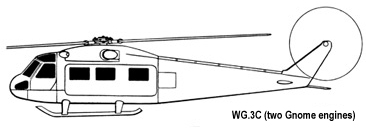
The origin of Westland’s work on the dedicated armed attack helicopter can be traced to studies first undertaken by the WHL Future Projects team under Austin during 1962 to explore the configuration of a 3,630 kg (8,000 lb) maximum take-off weight (MTOW) tactical utility helicopter for the Army Air Corps sized to transport a troop squad. A variety of options were proposed and these were used to solicit User comment and support for such a concept. This aircraft was, from the outset, conceived as having the potential to be armed with a range of air to ground weapons. A key aspect was that a common airframe was to be used, equipped as required with role equipment.
Following discussion with the User community, the definitive WG.3C(2) exhibited a substantial increase in take-off weight, a pair of de Havilland Gnome engines mounted forward of the rotor head and a cabin enlarged to accommodate up to 15 passengers plus two crew. Both the low-profile gearbox, using conformal gear forms, and the flexible element rotor head were close analogues for design solutions adopted later by the production Lynx helicopter.
Though well received at the time, the User community requested that a further stretch be implemented but the Company reaction was that such a move would place the design too close to on-going WS-58 “Wessex” replacement proposals and at this point all work on the WG.3 ceased. However, Austin’s team now returned to the original concept of a squad carrier and a new designation was adopted, WG.13, to clearly differentiate it from the earlier WG.3 series of studies. The WG.3 design was, therefore, the true progenitor of the Lynx.
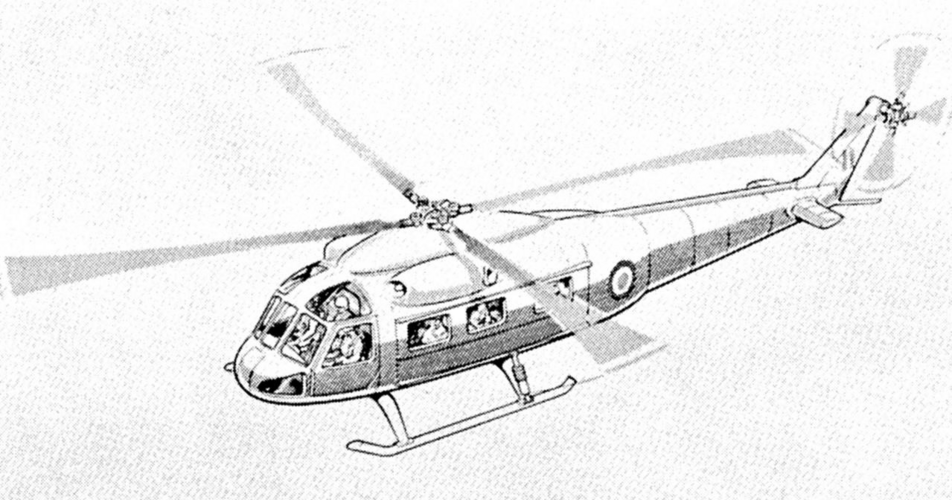
Source (text and main picture):Westland and the Attack Helicopter – from Lynx to Apache, by Dr R V Smith, FRAeS; J P Graham, FRAeS (2020).
Last edited:
Similar threads
-
-
Agusta A.101-G triple-engine helicopter project......
- Started by Caravellarella
- Replies: 23
-
-
-

